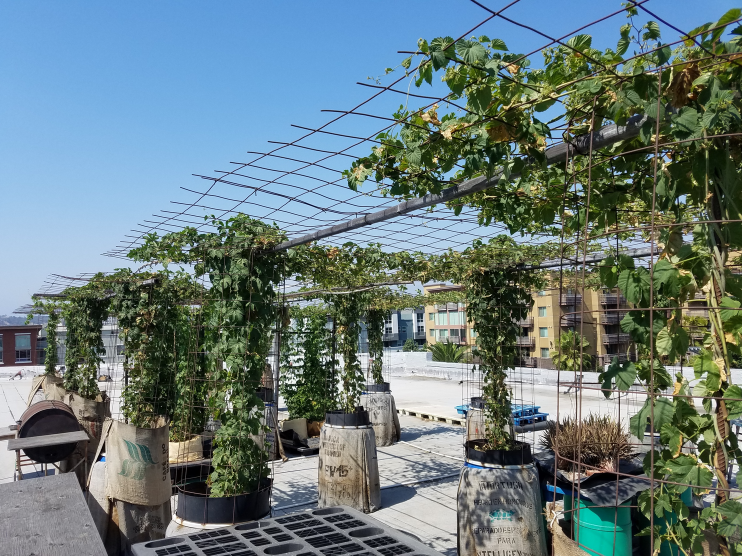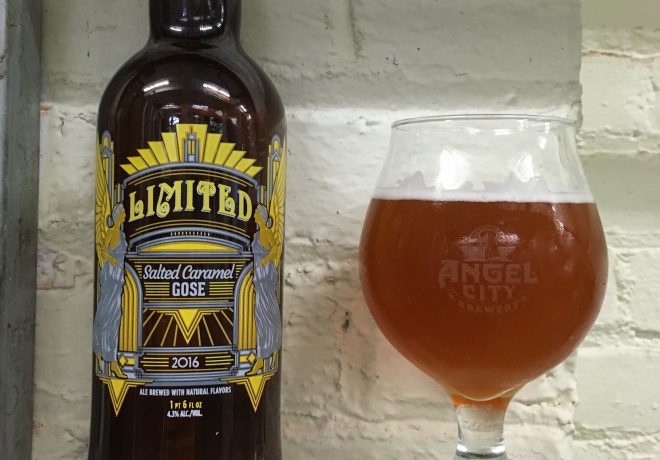
In our WTF is That series, we usually highlight some of the strange and notable items you’re likely to see in our brewery. This time, however, we’re talking about something you’re not going to see – and that’s because it’s hidden out of sight.
You might catch a glimpse of it if you walk away from the brewery, though. If you go about a block and a half east of the brewery, turn back, and look up, you’ll see a bit of green popping out above the building that almost looks like the leaves of a banana tree.
Those are the leaves of a banana tree.
It’s Angel City’s most hidden secret – above the three stories of the John A Roebling’s building, we’ve built an urban oasis in a city known for sprawl. And yes, banana trees are part of that oasis – along with pomegranates, passion fruit, pineapples, and (of course) hops.

But why spend time gardening when there’s beer to be brewed? The answer actually lies in the beer itself. You see, as brewers, the biggest form of waste we have is known as spent grain. That’s what’s left of the malt after we’ve soaked it in water and stripped it of its sugar. To avoid throwing it out, most brewers will work with a local farmer to use it as cattle feed – ensuring that what doesn’t become beer can at least become cheese.
And we do that too. But shortly after we started brewing, our farmer informed us that he has a brother-in-law that might be interested in some of that grain as well. When we learned that he wanted to use it as compost for his garden, that gave us a thought – why don’t we grow a garden right here?

So we enlisted his support, and pretty soon Ray Narkevicius had a small but thriving garden 50 feet above the Arts District streets. But here’s the thing about Ray – he’s not just a farmer, he’s also an engineer. His day job has him working on 747s down at the airport. Needless to say, his garden is fairly high tech.
The compost, as we mentioned, is all natural – half comes from our spent grain, while the rest is a mix of coconut fiber and coffee grounds from local cafes. His irrigation is waterwise, with a complex recapture system that allows for water to be reused after it drains through the soil. And his structure allows for the plants to grow with a small footprint, which is important for such a small space.

Of course, the most valuable crop for us is the hops. And hops aren’t exactly the easiest to grow in LA – the much prefer the long summer days of the Pacific Northwest. But Ray has managed to do it. Still though, we only yield enough per year for about 1 batch of beer, so we have to make it special.
All of this has made our rooftop garden a pretty special place. In fact, in 2016 the Natural History Museum studied it for its unique position in the biodiversity of LA, and even found a rare species of ladybug STD up there!
(Remember, parents: talk to your ladybugs about safe sex).
Sadly though, this secret garden remains closed to the public, and that’s because a 105 year old building like ours doesn’t exactly lend itself to being ADA-accessible, or safe for a a beer garden. But keep an eye out next time you’re at the brewery. You may just see Ray coming down the stairs, and if you’re lucky, he may have a couple of slices of dragonfruit for you to try!







